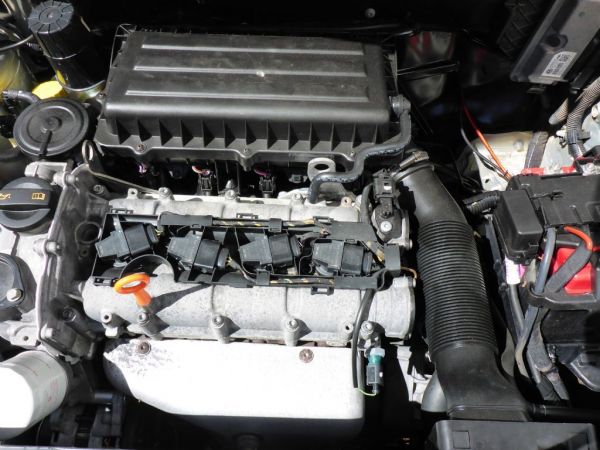Just How a Clp Engine Can Improve Efficiency in Different Industries
The introduction of CLP engines notes a considerable change in operational performance across numerous sectors, driven by their capacity to optimize gas consumption and lessen downtime. Industries such as production and logistics stand to acquire substantially from their robust layout and constant power result, which guarantee to simplify operations and improve performance. As organizations significantly prioritize sustainability alongside effectiveness, the function of CLP engines becomes a lot more crucial. What stays to be seen is just how these developments will certainly shape the future landscape of commercial operations and their effect on broader economic patterns (clp engine).
Overview of CLP Engines
CLP engines, or Continuous Fluid Propellant engines, stand for a considerable improvement in propulsion innovation, particularly for room applications. These engines make use of a constant feed system that permits for the continual expulsion of propellant, leading to improved performance and performance contrasted to conventional strong or hybrid propulsion systems. By preserving a continuous flow of fluid propellant, CLP engines can accomplish much more precise drive control, which is critical for steering spacecraft in numerous objective scenarios.
The layout of CLP engines integrates innovative materials and cutting-edge gas management systems. clp engine. This results in reduced weight and boosted reliability, crucial aspects for long-duration space goals. Additionally, the continual operation minimizes the threat of combustion instability, a typical challenge in traditional rocket engines.

Advantages in Production
The manufacturing of Constant Liquid Propellant (CLP) engines presents numerous remarkable benefits that boost both performance and cost-effectiveness. Among the main benefits is the streamlined production procedure, which lowers the intricacy connected with conventional propulsion systems. By utilizing liquid propellant, producers can achieve greater accuracy in engine performance, resulting in optimized power result and decreased waste.
Additionally, CLP engines help with a higher level of modularity, enabling simpler integration right into different manufacturing lines. This flexibility can dramatically reduce lead times and boost general operational adaptability. Making use of CLP technology additionally has a tendency to minimize the demand for substantial maintenance due to less moving components, which equates into minimized downtime and operational prices.

Applications in Logistics
Leveraging Continual Fluid Propellant (CLP) engines in logistics provides substantial benefits in functional effectiveness and integrity. Extra resources These engines give a durable remedy for numerous transport requirements, allowing the smooth motion of products across large distances. The inherent design of CLP engines allows for regular power result, which converts right into smoother and extra foreseeable transport routines.
One of the key applications of CLP engines in logistics remains in sturdy products transport, where they can drive both ground and aerial lorries. Their capacity to preserve high performance under differing lots conditions guarantees that delivery timelines are met, therefore improving client fulfillment. Furthermore, CLP engines can be incorporated into automated logistics systems, facilitating real-time tracking and optimizing course planning.
Moreover, the sturdiness of CLP engines decreases upkeep downtime, enabling logistics companies to maximize their operational capacities. This is especially useful in warehousing operations, where performance in dealing with and transporting products is essential. As logistics proceeds to progress, the integration of CLP engines stands for a forward-thinking approach that not just improves performance yet likewise sustains the market's growing needs for reliability and rate.
Influence On Power Performance
Exactly How do Continual Liquid Propellant (CLP) engines improve power efficiency in transportation? his explanation CLP engines use a consistent flow of fluid gas, enhancing burning procedures and maintaining a steady drive output. This style lessens power losses related to typical combustion engines, where fuel shipment can differ and lead to ineffectiveness.
The continual operation of CLP engines allows for an extra efficient thermal cycle, leading to higher details impulse contrasted to conventional engines. clp engine. This equates to minimized gas intake for the same amount of work done, dramatically lowering operational expenses across different transport fields, consisting of aeronautics and maritime industries
Moreover, the ability of CLP engines to keep ideal efficiency under varying load conditions decreases the need for constant velocity and slowdown, further enhancing gas efficiency. Improved power performance not only contributes to cost financial savings but also results in lower greenhouse gas emissions, aligning with global sustainability objectives.
Future Trends and Innovations
Arising innovations in Continual Fluid Propellant (CLP) engine modern technology assurance to change the landscape of transport efficiency and sustainability. As industries pivot towards greener choices, CLP engines stand at the leading edge, integrating innovative products and layout approaches that improve performance while minimizing ecological influence.
One of the most encouraging patterns is the adoption of crossbreed systems that integrate CLP engines with sustainable energy sources. This harmony can enhance gas usage and decrease emissions, straightening with worldwide sustainability objectives. Advancements in computational liquid dynamics (CFD) are promoting the style of more aerodynamically effective engines, leading to reduced drag and boosted fuel performance.
Furthermore, the growth of smart surveillance systems is set to boost operational effectiveness. These systems utilize data analytics and IoT modern technology to optimize engine efficiency in real-time, ensuring that the engines operate within their most reliable parameters.
As research study remains to check out alternative propellant solutions-- such as biofuels and synthetic fuels-- the future of CLP engines looks encouraging. By harnessing these advancements, industries can not only enhance their performance but additionally add substantially to a cleaner, more sustainable future in transport.
Verdict
Finally, CLP engines represent a considerable innovation in efficiency across several sectors. Their ability to maximize fuel usage and minimize functional prices, combined with a continuous feed system, enhances power outcome and operational dependability. The combination of innovative products and less moving parts minimizes maintenance requirements, while alignment with sustainability goals settings CLP engines as an essential innovation for the future. Proceeded advancement in this area assures more renovations in efficiency and ecological efficiency.